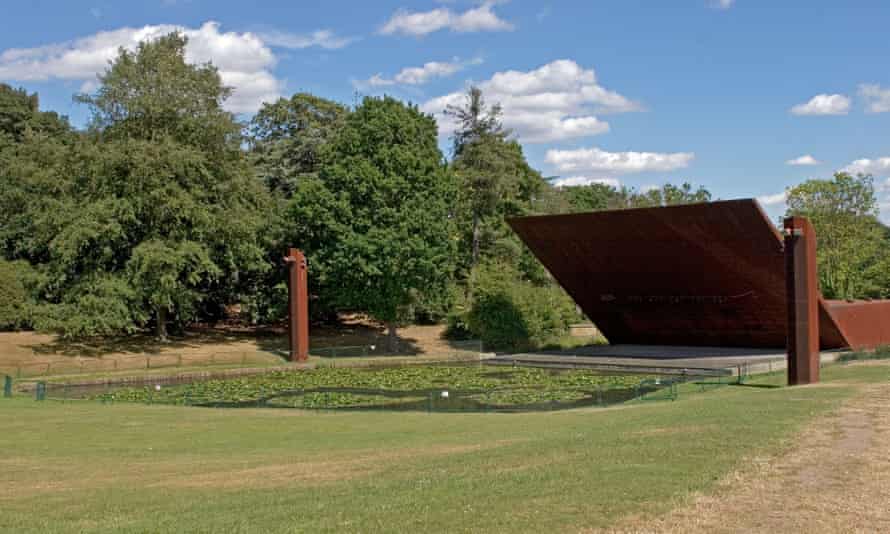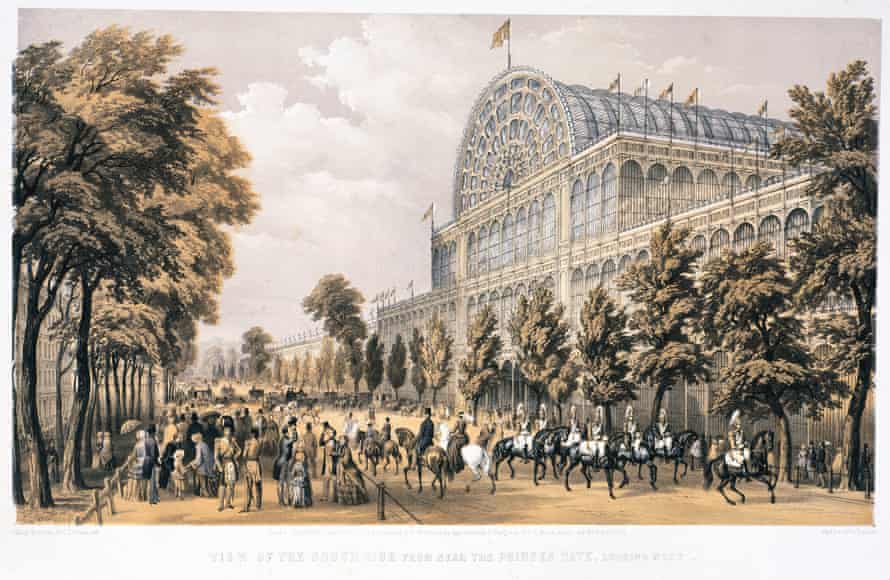Last summer, a competition was launched called the World Cup of South London Parks. The format was knockout, pitting 32 of south London’s finest green spaces against each other (voted for in Twitter polls) until only one remained standing. Perhaps because there was so little actual sport on, this World Cup proved to be tribal and unexpectedly gripping. There were the big beasts: Wimbledon Common with its Wombles; Greenwich Park, a world heritage site no less; and Richmond Park with its rutting stags. Also, plucky underdogs: Peckham Rye and Archbishop’s Park, with its terrifying 225-metre zip wire.
Crystal Palace Park, though, destroyed this formidable field. First-time visitors to the 200 acres of rolling parkland between Sydenham and Penge might be a little bemused by this result. Go on a Sunday and the loudest noise will not be birdsong, but the droning buzz of the radio-controlled model-car racing club, which occupies prime real estate in the centre.
Even impassioned fans of Crystal Palace Park have to concede that this is a space whose halcyon days are bygone. It’s a place whose landmarks and achievements are qualified by the words “used to”. It used to be the UK’s top tourist destination, when the original glass and iron structure after which it is named – which was 563 metres long and three times the size of St Paul’s cathedral – was moved here in 1854, after dropping jaws at the Great Exhibition in Hyde Park in 1851. In its first year, the Palace of the People, as it was known, welcomed six million visitors, at a time when the population of the UK was only 18 million.
It used to be the premier sports venue in the land: WG Grace used to play cricket here; the FA Cup final was held on the grounds until the first world war. When I was growing up, Crystal Palace was renowned as an athletics venue, the site of the country’s first rubberised all-weather track. Seb Coe, Steve Ovett and Steve Cram ran in the stadium; when Steve Backley set the world javelin record there, the News at Ten had to start three minutes late.

The park used to be a place of cultural significance, too. The Crystal Palace Bowl, an amphitheatre of grass with a lake-fronted stage, has been headlined by Pink Floyd, the Beach Boys and hosted the final London performance of Bob Marley & the Wailers, their largest UK show. In 1998, a new stage with a Richard Serra-inspired slanting roof made from pre-weathered Corten steel – nicknamed “the rusty laptop” – was shortlisted for the RIBA Stirling Prize.
The rusty laptop is now in disrepair: the acoustics were always appalling and the area prone to flooding. And such mishaps are a recurring feature in the disaster-prone history of Crystal Palace Park. The original Palace of the People was in financial trouble from day one, as it struggled to the recoup the £1.3m (£133m in today’s money) that it cost to build it and then move it. It was damaged by winds in 1861 and a fire in 1866. There have been other misfortunes: in 1896, Bridget Driscoll became the first UK pedestrian to be killed by a car, travelling at 4mph, here; in 1900, an elephant called Charlie escaped from a circus that had taken up temporary residence in the park and trampled his keeper to death.
Then, in November 1936, the palace burned to the ground. Winston Churchill came to watch the blaze and pronounced: “This is the end of an age.” There have been discussions over the years about what to do with the site: in 2013, Boris Johnson, then mayor of London, reached a tentative agreement with Chinese developers. But nothing has come of them. The space where the palace once stood is a field, some grand stone steps and the odd headless statue.

So, why would anyone want to visit Crystal Palace Park now? True, it sounds a little bleak, but there is something magical about this place. I knocked about there a lot during the lockdowns with my kids. I never failed to find something to pass an hour or two: whether it was watching teenagers trying to cross the moat to get to the rusty laptop, or athletes playing beach volleyball on the 3,000 tonnes of sand shipped over from Horse Guards Parade after the 2012 Olympics. Much as the ruins of a castle are more interesting than a pristine one, a trip to Crystal Palace Park affords your imagination unlimited opportunities to fill in the gaps of history.
The draw nowadays is the “dinosaurs”: 30 palaeontological statues created by Benjamin Waterhouse Hawkins in the 1850s that were his best guess at what dinosaurs looked like. (Spoiler: he didn’t get it quite right.) And then there are just the bizarre things this place has been and seen. The Crystal Palace was the site of the first mass-use public toilets; it hosted the first ever cat show. Show me the child (under eight) who’s not impressed by these feats. Also, new for 2020/21, the park now has a walk-through Covid-19 testing site. Who says Crystal Palace Park hasn’t moved with the times?
The great architect Sir Norman Foster describes the Crystal Palace as his favourite building: he calls it “the birth of modern architecture”. It may not be what it was, but it is still, as the World Cup of South London Parks shows, a place of wonder and eccentricity.




